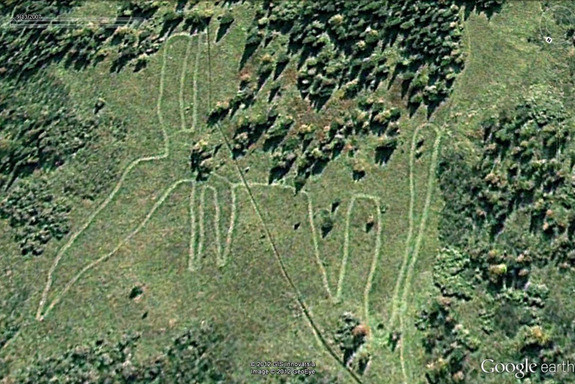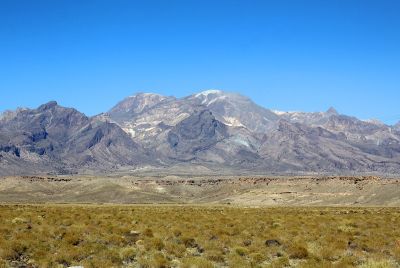Nazca Lines: 50 Ancient Geoglyphs including Giant Swastikas Discovered in Kazakhstan

Over 50 geoglyphs have been discovered across the northern steppe of Kazakhstan, deepening the mystery of why the ancient patterns were created.
Using Google Earth, archaeologists found the geoglyphs - man-made outlines on the ground made from mounds or ditches that are visible from above - in a variety of shapes, including squares, rings and swastikas.
Often attributed to the sun, the swastika was used among the ancient Celts, Indians and Greeks, and later in Buddhism, Jainism and Hinduism. In Asia, the symbol first appears in archaeological records around 2,500 BC in the Indus Valley Civilisation.
"As of today, we can say only one thing – the geoglyphs were built by ancient people," archaeologists Irina Shevnina and Andrew Logvin, who discovered the Kazakh geoglyphs, told Live Science.
They added that other structures and evidence of fireplaces within the geoglyphs suggest rituals took place there.
Experts have compared the findings in Kazakhstan to the famous Nazca Lines in Peru, which were designated a UNESCO World Heritage Site in 1994.

Although some of the Peruvian geoglyphs resemble Paracas motifs, an Andean society that lived between 800 and 100 BCE, scholars believe they were created by the Nazca culture between 400 and 650 AD.
In the past year, researchers from Kostanay University and Vilnius University in Lithuania have been conducting archaeological excavations, aerial photography and ground-penetrating radar surveys to examine the geoglyphs in Kazakhstan.
The symbols vary in shapes and size. One swastika was made from timber, although the majority of the geoglyphs were made using mounds of earth.
One of the largest measures 1,312ft in diameter, suggesting it was created by a larger, well-established culture, the researchers said.
Ancient tribes may have used the geoglyphs to mark ownership of the land, but the reason behind the creation of the patterns remains unknown.
Central Asia is pockmarked with other mysterious ancient constructions called kurgans, mounds heaped over a burial chamber. Found across Kazakhstan, Mongolia and Poland, the earliest kurgans appeared in the 4<sup>th millennium BC in the Caucasus and are associated with the Indo-Europeans.
Geoglyphs and similar patterns have been discovered across the world, including in Britain, thanks to the introduction of Google Earth. In 2012, a giant elk-shaped geoglyph was discovered near Lake Zjuratkul in the Ural Mountains in Russia.
The Kazakh geoglyphs were presented at the European Association of Archaeologists' annual meeting in Istanbul.
© Copyright IBTimes 2025. All rights reserved.


















